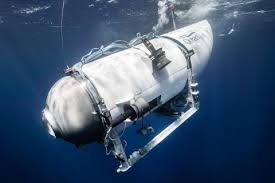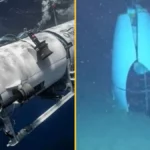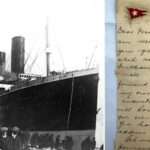
A race against time is on to locate a missing submersible in the North Atlantic with five people onboard, with less than three days oxygen remaining (as at midday 20 June), after contact was lost less than two hours into what should have been an eight-hour dive.
The truck-sized vessel, known as Titan, is operated by a company called OceanGate who take the passengers down to the wreckage of the famous ocean liner The Titanic, which sits 3,800m (12,500ft) beneath the surface, approximately 600km (370 miles) off the coast of Newfoundland, Canada.
A full-scale search and rescue operation was set in motion, run from Boston in Massachusetts, with so far Military planes, a submarine and sonar buoys being deployed, in a co-ordinated effort to find the submersible before it is too late.
Experts suggest there is a slight chance that the tiny vessel could have surfaced and is bobbing around the ocean waiting to be sighted, but most believe it has sunk and is likely to be at the bottom of the sea.
Any rescue from the deep will be incredibly complex, and as it only had 96 hours of oxygen available at the commencement of the dive, and it is now more than a day since its launch, it is a life or death scenario, with every second counting in what is a huge area to scrutinise, both above and below the waves.
Tickets for what is an eight-day trip in total and which includes numerous dives to the passenger liner’s wreck, do not come cheap at $250,000 (£195,000).
The Titanic was the largest ship of its time, when it hit an iceberg on its maiden voyage from Southampton to New York in April 1912 and sunk within a matter of hours, taking more than 1,500 of its 2,200 passengers and crew down with it to its final resting place.
Its remains were discovered in 1985, and the site has since then become a fascination to both scientists and explorers, but at such depths, it is accepted that it is also extremely dangerous.
Bolted in
The passengers were taken out some 600km (370 miles) onboard the research vessel Polar Prince from St John’s in Newfoundland, before entering the submersible. They are completely sealed by bolts applied from the outside, giving those inside no means of escape, even after emerging from the depths, without external assistance.
The dive began some 1,450 km (900 miles) off the coast of Cape Cod; but contact was lost with the mini-sub just one hour and 45 minutes later.
Huge search and rescue operation
Government agencies, the US and the Canadian navy, plus commercial deep-sea firms are all part of what is now a huge rescue operation. Rear Admiral John Mauger, of the US Coast Guard pointed out that it would need additional expertise to rescue the vessel if it was found underwater, and called for anyone in the private sector to come forward if they felt they could be of assistance.
Horizon Maritime, which co-owns the Polar Prince, confirmed that it remains part of the rescue operation alongside a second vessel, the Horizon Arctic, which has also been sent to the site.
Who are on board the submersible?
British adventurer Hamish Harding is known to be one of those on board the submersible. The 58-year-old billionaire and private jet dealer, is the chairman of aircraft firm Action Aviation, and is a renowned explorer who has flown to space, visited the South Pole and holds three Guinness World Records, including the longest time spent at full ocean depth during a dive to the deepest part of the Mariana Trench.
Two other passengers are a British businessman and his son. Shahzada and Suleman Dawood are from one of Pakistan’s richest families, with the father being a trustee of the Seti Institute, a research organisation in California.
It is believed the other two on board are French explorer Paul-Henry Nargeolet and OceanGate’s chief executive, Stockton Rush.
Passengers aware of the dangers
The company sells the eight-day trip on its carbon-fibre vessel as a “chance to step outside of everyday life and discover something truly extraordinary.” It does however have a waiver that passengers need to sign which basically acknowledges that they appreciate that the submersible is fundamentally “experimental” and that it has not been approved or certified by any regulatory body, and could result in physical injury, disability, emotional trauma or even death.”
It is also known that effectively the Titan only has one button and is therefore run by using what is in essence, a sophisticated video game controller.
Expert spells out the realities
Whilst everyone hopes for a successful outcome, submarine expert Professor Alistair Greig from University College London spelt out the realities. The best scenario he said would be that a “drop weight” was released after an emergency, in order to bring it to the surface, possibly after a power failure and/or communication failure and if that was the case the submersible would then be bobbing about on the Atlantic waiting to be spotted, but that involves a vast search area.
If that had a glimmer of positivity, his other options put forward did not contain too much to get excited about.
He said that if the hull of the vessel had been compromised resulting in a leak, then “the prognosis is not good.” Also, if it has gone down to the seabed and can’t get back up under its own power, its prospects are very limited.
He commented: “While the submersible might still be intact, if it is deeper than more than 200m (656ft) there are very few vessels that can get that deep, and certainly not divers; plus those vehicles designed for navy submarine rescue certainly can’t get down to anywhere near the depth of the Titanic.”






0 Comments